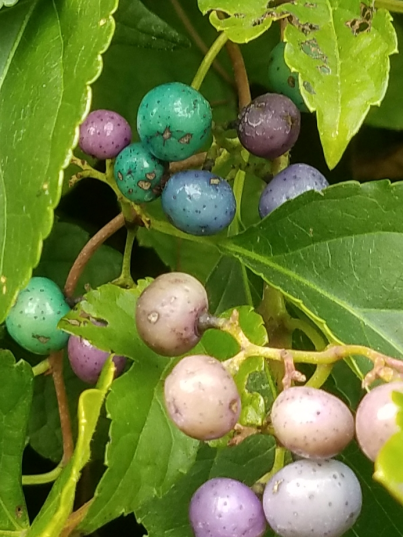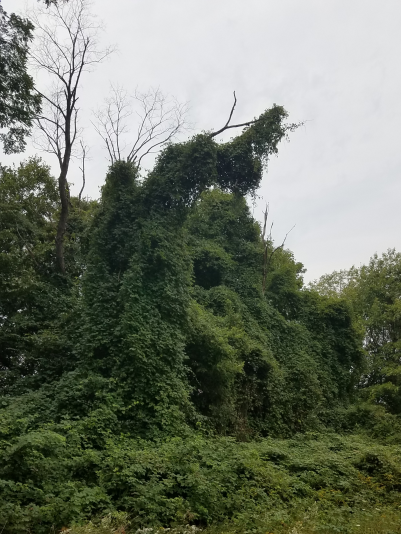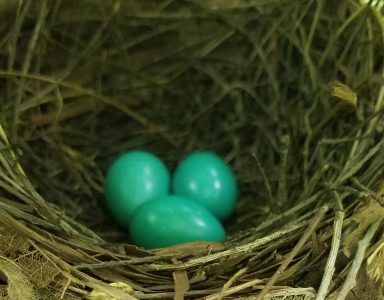Before I began my nature study in Eliza Howell Park, I did not know Porcelain berry at all (it is sometimes called Amur peppervine). In the last few years, I find myself giving it more and more attention. Since many visitors to the park are not yet familiar with it, this might be is a good time for an introduction – rather, two introductions.
1.Porcelain berry is an ornamental vine with multicolored berries in September and October.

Porcelain berry is a native of East Asia that was first brought to this country about 150 years ago as a landscape ornamental. It has escaped gardens and has now become established in a variety of places in the eastern part of the United States, slowly spreading west. It is apparently not yet widespread in Michigan.
This year the berry crop in Eliza Howell is heavy, with many opportunities to find scenes like this.

The berries ripen to speckled blue, pink, purple, green, and other colors.

Birds are attracted to the berries, especially when they are as abundant as they are this year. Robins, primarily fruit eaters in the fall, have already started on them.
Humans also find the berries edible, though the 2 – 4 seeds in each berry do not leave much room for pulp.

2.Porcelain berry is a rapidly growing vine that covers shrubs and small trees.
The eye-catching nature of the berries is not the only way in which I want to introduce this vine. Especially when I am walking with individuals with an interest in habitat and plant variety, I want to point out how it can overtake and shade out other vegetation.

The vines are very thick and spread rapidly; they can grow up trees 20 feet or more.

Since I started observing a few patches in the park about a decade ago, it has spread to many other locations. It grows easily from seed. I now see it under many of the larger trees scattered within the road loop, probably started from seeds that passed through the birds that ate the fruit and then perched in the trees.
After a number of years, this is what can happen.

Meet Porcelain berry: it is an ornamental distinguished by multicolored fruit; it forms thick mats that shade out other plants.
I will continue to observe and seek to know it better. I invite others to do the same.

Would it be fair to characterize it as invasive?
LikeLike
It would, yes, and a number of states have done so. I chose not to use that label here because I would like people to get to know the vine first, rather than immediately putting it in the category of something to be controlled.
LikeLike
It should be controlled but probably never will be. It is a non-native plant that damages naturally occurring ones like the trees you’ve shown covered by it. You should be glad you don’t have kudzu. Here in northern Virginia I see it along train tracks on my way to work and it’s horrid what it does. Oddly, train tracks have been a pathway for many plants to spread and that’s how kudzu got established around here. Keep your eye out for the “mile a minute weed”! https://en.m.wikipedia.org/wiki/Persicaria_perfoliata
LikeLiked by 1 person